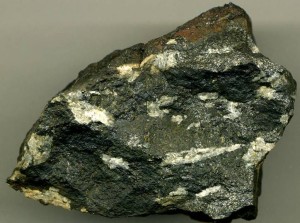Past Events of the Blackstone Valley Historical Society
March 22nd, 2015: The Building of the Scituate Reservoir
Raymond Wolf, author of The Scituate Reservoir
Early last century, Providence’s quest for water became a nightmare for the town of Scituate. Among those who had to leave their homesteads to make way for this massive project was Ray Wolf’s family. Through the beauty and heartbreak of his mother’s poetry, Ray has kept alive the total change in the lives of the hundreds of families whose homes were demolished for the construction of the Scituate Reservoir.
The construction of the Reservoir, once the land was cleared, was an engineering marvel. Follow Ray through the amazing work involved in bringing water miles from its origin to its intended goal. The State of Rhode Island incredibly documented every part of the project, and photographed every building intended for demolition, every major shovelful which brought the finished product a little bit closer. And, Ray has compiled these photographs to bring that part of Rhode Island history to life. Come witness the birth of the Scituate Reservoir.
April 26, 2015: Cumberlandite!
Judy Hadley, R. I. State Mineral Hunters
Our state rock, Cumberlandite, is almost exclusively found on a 4-acre lot in the Blackstone Valley. It was first discovered by settlers hundreds of years ago, and used to manufacture farm tools and cannons, although cannons tended to crack.
Picture of Cumberlandite from http://www.geocaching.com/geocache/GC51DR2_only-in-rhode-island
Judy Hadley has been researching this unique rock for several years, and is writing a book on it, to be published later this year. She will also have with her samples for you to observe. Come and discover more about Cumberlandite, and hear many interesting historical tales of our state roc k.
k.
Image: This is a segment of railroad track from the historic Iron Mine Railroad. This piece was cut from a longer piece that was dug out of the ground behind the Elder Ballou Meeting House Cemetery. The Iron Mine Railroad operated for less than ten years and was used to transport quarried cumberlandite, which was used as trap rock. Presented to the BVHS courtesy of Judy Hadley and the Blackstone River Watershed Council.
May 17, 2015: Annual Meeting and Christine Nowak Lecture, David Harvey, Louisquisset: The quest for the “meeting place”.
Saturday, June 13, 2015: Welcome Summer at the Second Annual Strawberry Social at North Gate
With the warmer days of summer about to come upon us, what better way to celebrate than with Strawberry Shortcake? The Blackstone Valley Historical Society as in days of old, will welcome the new season with the pick of the strawberry crop on homemade cake, and topped with whipped cream.
As part of the festivities, the old Bakery will be open, to show how cakes and cookies were made in the turn of last century. Also, for children, there will be crafts to take home as souvenirs of this time of year.
August 26, 2015: BVHS”s 3rd Annual Tour of Cogswell Tower
Central Falls Councilman Bob Ferri invites you to walk with him around Jenks Park and tour the Cogswell Tower. On Wednesday, August 26 at 6:30 p.m. he will talk about this gem within the city, and show you what few know exists there: A grotto at the base of the Tower.
This walk was sponsored by the Blackstone Valley Historical Society, as part of its On-The-Go series of excursions around the Valley.
Romantic view of Jenks Park: a painting on a small souvenir china plate in the collection of the BVHS, from the Lysander Flagg Museum.
September, 2015: Online Exhibit: Selections from the Archives of Limerock Grange #22
October 18, 2015: William Jennings, Aboard the Fabre Line to Providence: Immigration to Rhode Island.

William Jennings gave a great talk about the subject of his book, Aboard the Fabre Line to Providence: Immigration to Rhode Island, co-authored with Patrick. E. Conley.
Acute congestion at the port of New York during the early decades of the 20th century resulted in the Fabre Line, a French-registered transatlantic steamship company catering to immigrant transport, choosing Providence as a port of call for its steamers between the years 1911 to 1934. At that time Providence was experiencing a renewed maritime vigor. During its calls there the Fabre Line landed nearly 84,000 aliens at Rhode Island’s capital city, 11,000 of which chose Rhode Island as their permanent place of abode. The two largest immigrant groups to debark at Providence during Fabre’s years were the Portuguese and Italians; however, many others came from various countries around the Mediterranean basin. Immigrants were the mainstay of the line, as was passenger traffic.
Immediately before the outbreak of the First World War, the Fabre Line took off with a boom only to have the conflict dampen its business and its futureexpectations. Yet the line held on, and the initial postwar years were the company’s best at Providence. Then came the national immigration restriction acts of 1921 and 1924 which presented the line with a serious challenge. Seeking to hold on to passenger traffic, Fabre ships began the practice of sending its vessels to various ports in the eastern Mediterranean and the Black Sea, along with its traditional calls at Italy, Portugal, and the Azores, in order to fill its passenger manifests. Also, in an endeavor to offset the loss of human traffic, the line sought to increase cargo handling at the port as well as making a vigorous effort to promote tourist business. The line was unsuccessful in each of these latter efforts. When the Great Depression of the 1930s deepened, the Fabre Line quit the port of Providence without recognition or announcement on July 4, 1934. The days of transatlantic glory at Providence came to an abrupt termination.
The Fabre story involves tales of Providence and the state making serious efforts to keep Fabre at the port, Fabre’s friction with the New Haven Railroad, whose dock the line used during it’s initial years at Providence, the perils of transatlantic travel during the war years, the immigrant experience upon landing and the fine efforts of those who assisted them when they arrived, and the line’s attempt to beef up cargo handling and promote tourist traffic at the port in an effort to bolster the losses from sagging immigrant traffic.
Many Rhode Islanders, and those residing in Southern New England, can trace the experiences of their intrepid ancestors journey to the “promised land” of America on the Fabre Line during those early years of the twentieth century.
December 6. 2015: Early Settlers of Albion, RI
A Presentation by Robert L. Tessier
 While much of what is known about Albion revolves around the history of its mill, little is known about the area prior to 1822. What has been known about early settlement has come down through oral history and has been repeated many times since its original publication in 1936. Truth does not come through repetition, however. It comes from hard facts and reliable source documents. Based on comprehensive research, this program will identify some of the early settlers of Albion and the lands they owned, with particular emphasis on the Lapham family, who owned land in Albion for over 150 years. In the course of this discussion, many long-held claims will be debunked as well.
While much of what is known about Albion revolves around the history of its mill, little is known about the area prior to 1822. What has been known about early settlement has come down through oral history and has been repeated many times since its original publication in 1936. Truth does not come through repetition, however. It comes from hard facts and reliable source documents. Based on comprehensive research, this program will identify some of the early settlers of Albion and the lands they owned, with particular emphasis on the Lapham family, who owned land in Albion for over 150 years. In the course of this discussion, many long-held claims will be debunked as well.
 Biography: Bob Tessier is a retired Federal employee and Providence College alumnus who spent his formative years in Albion. Currently living in Maryland, Bob has nevertheless maintained a keen interest in the history of Albion. He is the creator and administrator of the Facebook group page “Remembering Albion, Rhode Island” and also the website “Tell Me About Albion, Rhode Island.” He is a member of the Blackstone Valley Historical Society and the Rhode Island Historical Society, and is completing a research project about an aspect of Albion history that is supported by a grant from the Rhode Island Council for the Humanities, an affiliate of the National Endowment for the Humanities.
Biography: Bob Tessier is a retired Federal employee and Providence College alumnus who spent his formative years in Albion. Currently living in Maryland, Bob has nevertheless maintained a keen interest in the history of Albion. He is the creator and administrator of the Facebook group page “Remembering Albion, Rhode Island” and also the website “Tell Me About Albion, Rhode Island.” He is a member of the Blackstone Valley Historical Society and the Rhode Island Historical Society, and is completing a research project about an aspect of Albion history that is supported by a grant from the Rhode Island Council for the Humanities, an affiliate of the National Endowment for the Humanities.




